Decoding Bird Songs: An In-Depth Online Guide
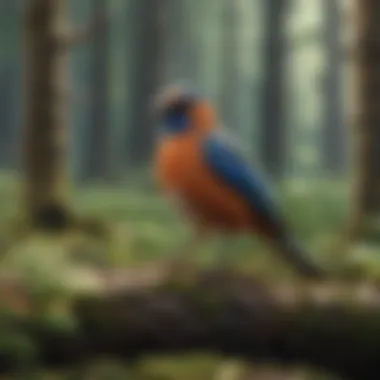
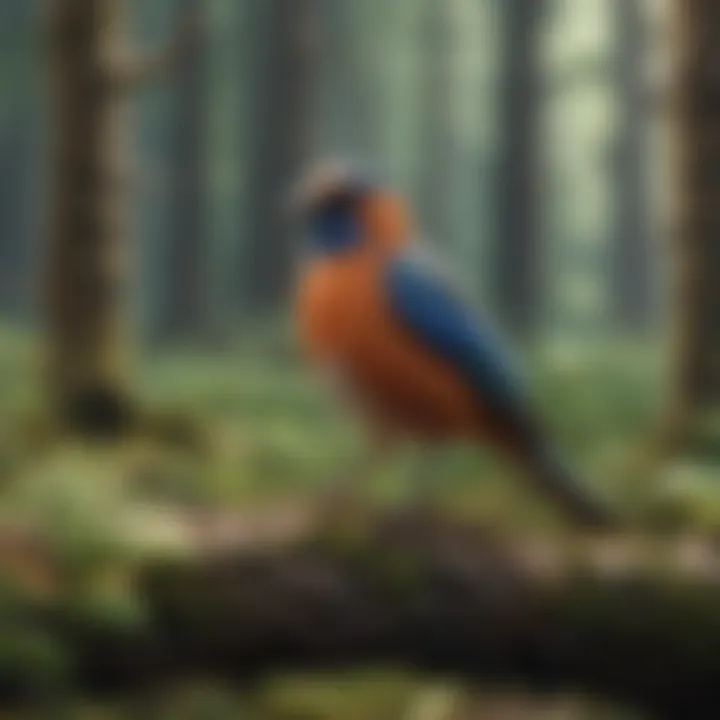
Intro
Bird songs are not merely delightful melodies wafting through our backyards; they offer a glimpse into the intricate lives of these avian inhabitants. In an age where technology intersects seamlessly with nature, the online landscape provides a plethora of resources for bird enthusiasts eager to enhance their sound identification skills. This guide aims to demystify bird songs by unveiling the tools, methodologies, and insights necessary to interpret these vocalizations.
By harnessing the power of online platforms, individuals at any level of expertise can deepen their connection to the avian world. Be it through dedicated apps, vibrant online communities, or engaging video resources, the possibilities are as vast as the sky itself. Additionally, understanding the broader ecological implications of bird songs—how they contribute to conservation efforts—fuels a greater appreciation for these winged messengers. So, let's embark on this exploration of avian acoustic artistry together.
Understanding Bird Songs
Bird songs, a symphony of the wild, are not mere sound bites. They play an essential role in the lives of birds and the ecosystems they inhabit. Understanding these vocalizations is paramount for bird lovers, conservationists, and researchers alike. In a world where technology enables us to listen and learn, recognizing and interpreting bird songs allows us to deepen our connection with nature.
Bird songs serve various purposes, from courtship to territorial disputes, and each note can convey a multitude of meanings. The intricate melodies are not only delightful to our ears but also crucial for the survival and wellbeing of avian species. By exploring the nuances of these vocalizations, we can appreciate the complexities of bird behavior and the environment they thrive in.
The Role of Bird Songs in Nature
Bird songs are the heartbeats of natural settings; they announce the arrival of spring, signal territorial boundaries, and attract mates. Each song serves as a language of sorts, enabling communication among birds for many reasons. The most prominent role, often overlooked, is how these songs aid in species identification. By honing in on specific pitches, rhythms, and harmonics, birdwatchers carve out a space not only for enjoyment but for awareness of biodiversity.
It's fascinating to note that some studies suggest birds can even identify themselves via their song repertoire. This characteristic helps strengthen social structures and enhances mating success. The soundscape of a habitat, therefore, offers insights into its ecological health, as the presence or absence of bird song can indicate environmental pressures, habitat quality, and shifts in population dynamics.
Types of Bird Songs
Bird songs can be categorized into several distinct types, each with unique characteristics and purposes. Understanding these types is crucial for bird enthusiasts looking to decipher the melodic language of our feathered friends.
Courtship Calls
The courtship call is often the most enchanting of all bird vocalizations. This particular song, typically performed by males during mating season, showcases a bird's health and fitness. A loud and complex call signals not just readiness to mate but also potential genetic quality.
A remarkable aspect of courtship calls is their variability; a single species might exhibit a wide range of variations based on factors like geography and individual fitness. This variability makes courtship calls intriguing yet challenging for budding ornithologists.
The primary advantage of studying these calls is understanding mating habits and species interactions, which is vital for conservation efforts. However, the downside lies in the difficulty of isolating specific calls from background noise, as multiple species often sing simultaneously during peak seasons.
Territorial Songs
Territorial songs represent a bird’s proclamation of ownership over a space. Loud and proud, these vocalizations are often more robust than courtship calls and designed to ward off competitors. They serve as audible markers of territory, helping to maintain boundaries that, if crossed, could lead to conflict.
The key characteristic of territorial songs is their repetitive nature; these songs can echo across vast distances and serve as both an alert to nearby rivals and a display of strength to potential mates. For bird enthusiasts, recognizing these songs can enhance the understanding of local ecology and species dynamics.
However, these songs can also present a challenge. For example, different bird species sometimes adopt similar rhythms or pitches, which can lead to confusion when trying to identify them in the field.
Alarm Calls
Alarm calls are another crucial category of bird songs, designed to alert other birds to potential dangers. These vocalizations are typically sharp and short, conveying urgent messages about predators or other threats. Unique in their structure, alarm calls can differ not only between species but also within them, depending on the nature of the threat.
One remarkable aspect of alarm calls is their context-specific nature. For instance, a songbird might use different calls to denote aerial versus terrestrial predators. This specificity allows for nuanced social interactions among species, which is vital for survival.
The benefit of recognizing alarm calls lies in their ability to enhance awareness among birdwatchers of the ecosystem's dynamic balance. Yet, identifying alarm calls can be tricky, as they are often accompanied by heightened bird activity, making it difficult to pinpoint the source of the sound.
In summary, understanding bird songs, their roles, and their types is foundational for anyone venturing into the world of ornithology. Such comprehension not only enriches personal experiences but also bolsters efforts aimed at conservation, making it a key focus for enthusiasts and professionals alike.
The Importance of Identifying Bird Songs
Bird songs play a crucial role not only in the natural world but also offer significant benefits for enthusiasts and researchers alike. Understanding these vocalizations goes beyond mere curiosity; it opens doors to deeper ecological insights and enhances our engagement with the avian species that share our environment.
Contributions to Ecological Studies
Bird songs can be seen as the very voice of nature, providing an audio document of an ecosystem's health. By identifying species through their songs, researchers can assess biodiversity and monitor changes within habitats. This is particularly important in the face of environmental challenges like habitat loss and climate change. Each song represents a unique code that conveys information about the species present, their behaviors, and even their population dynamics.
- Monitoring Biodiversity: Songs act as indicators of various species within an area; for instance, if certain calls are declining, it may highlight shifts in habitat suitability.
- Habitat Quality Assessment: Frequent territorial songs from a particular species might tell us about the quality of the habitat they occupy. A diverse chorus often suggests a healthy ecosystem.
- Migration Patterns: Understanding which birds sing in specific seasons can aid in tracking migratory patterns. This means not just knowing when they arrive or leave, but also calendarizing their behaviors based on environmental changes.
Through these contributions, bird songs serve as both a diagnostic tool and a valuable resource for conservation efforts, promoting strategies that ensure species survival and healthy ecosystems.


Enhancing Birdwatching Experiences
For the passionate birdwatcher, identifying bird songs can immeasurably enrich the experience afield. It transforms passive observation into an interactive, engaging venture. Imagine standing among trees, deciphering the calls that flutter through the air. Each chirp and call becomes a clue, deepening one's connection with wildlife.
- Improved Identification Skills: Knowledge of bird songs refines observational skills, allowing birdwatchers to identify species even when they are hidden from view. This becomes especially useful in dense forests where visibility is limited.
- Increased Engagement: Recognizing a bird’s call enhances the thrill of discovery. It fosters attention and patience, leading to a greater appreciation of these creatures and their communicative nuances.
- Community Connection: Sharing bird songs and their meanings fosters a sense of community among birdwatchers. Online forums and local clubs often highlight unique calls, creating a culture of learning and sharing.
"Learning to recognize bird songs is like opening a window to nature’s symphony, where every note offers a new glimpse into the diverse lives of birds."
In this way, identifying bird songs is not just about the birds; it's about cultivating a profound reverence for nature that benefits both individuals and the greater ecological landscape. For pet bird owners and aspiring bird parents, especially, understanding these vocalizations can bolster their relationship with their feathered friends, leading to more enriching interactions.
Technological Advances in Bird Song Identification
The growing interest in identifying bird songs has brought about significant advancements in technology that facilitate this process. These innovations are crucial; they not only make bird song identification more accessible but also enhance the accuracy and efficiency of the task. As folks dive into this activity, understanding how technology plays a role is invaluable. From mobile apps to online databases, these advancements have created a pathway for anyone eager to learn about avian melodies, enriching their experience and knowledge in the field.
Mobile Applications
Popular Apps Available
When it comes to mobile applications, a handful have carved out a niche for themselves, thanks to their robust features and user-friendly interfaces. One standout is Merlin Bird ID, which allows users to identify bird species by answering a few simple questions about the bird's characteristics and location. Another popular option is BirdNET, which uses artificial intelligence to recognize bird songs through sound recordings. These apps empower users to capture and analyze bird songs, making them essential tools for both amateur naturalists and seasoned birdwatchers.
These applications shine with their real-time identification capabilities. Users simply record the bird's song, and the app analyzes it, offering probable matches. Yet, a challenge remains in accuracy, as results can vary with ambient noise or species variability. Nevertheless, many users find them practical and enjoyable tools for learning about local bird populations.
User Reviews and Ratings
User reviews and ratings provide valuable insights into the effectiveness of these apps. Many bird enthusiasts highlight how services like Merlin and BirdNET have significantly improved their identification skills. For example, users frequently commend Merlin's ease of use. They appreciate how intuitive it is, particularly for beginners who might feel overwhelmed by the intricacies of birdwatching.
Online platforms, like Reddit and Facebook, also feature discussions on these mobile apps, reflecting a lively community of users sharing tips and experiences. Conversely, some users have mentioned the occasional inaccuracies in app identification. These mixed reviews underscore the importance of cross-referencing identified species with personal field guides or local expertise.
Online Databases
Key Features of Bird Song Databases
Online databases such as Xeno-canto and the Macaulay Library are indispensable tools for bird enthusiasts. They house a trove of bird songs and calls from around the globe, accessible at the click of a button. One key feature of these databases is their extensive cataloging; users can search by bird species, location, or even song characteristics. This approach makes it easier to find the exact recording needed for accurate identification.
These databases stand out due to their community-driven contributions, fostering a global network of bird lovers who share recordings and information. Adjusting to new species' arrivals and understanding their calls became naturally smoother with these resources. However, the sheer volume of data can sometimes lead to overwhelming choices for new users, who might struggle to navigate through numerous recordings.
How to Contribute to Databases
Participating in these online databases is not only beneficial—it’s enriching too. Contributors can upload their recordings, thereby helping to grow and diversify the collection of bird songs. This collaborative effort reflects the community spirit within birdwatching. By sharing personal recordings on platforms like Xeno-canto, you're playing a part in a broader conversation about avian conservation and study.
Furthermore, many databases provide guidelines and tutorials for uploading, ensuring that even novices can participate without a hitch. This inclusivity allows more people to engage in scientific documentation, which could lead to more extensive research opportunities. A downside, however, might be the initial hesitation some might feel in sharing their work, but the community involves typically offers support and encouragement.
"Sharing our recordings can foster thousands of conversations about birds collectively. It's as if every song shared is a step towards understanding nature a little better."
The technological strides in bird song identification not only expand our ability to connect with nature but also invite everyone to participate in this fascinating pursuit. The combination of apps and databases has woven a rich tapestry of resources that cater to various skill levels, making the world of bird songs more accessible than ever.
A Step-by-Step Guide to Identifying Bird Songs Online
Identifying bird songs online is like having a ticket to a hidden world where melody and nature converge. Every chirp or warble tells a story, conveying emotions and establishing territory in their unique avian language. Engaging in this task can be immensely rewarding, unlocking not just the ability to recognize birds, but also fostering a deeper connection with the environment. Armed with the right strategies and tools, anyone–from the casual observer to the dedicated bird watcher–can decode these natural symphonies.
Listening Skills Development
To grasp bird songs, effective listening skills are essential. Much like mastering a language, it’s vital to tune your ears. Start by familiarizing yourself with different pitches and rhythms. One practical approach is to pay attention to familiar calls, whether it's the delightful song of the American Robin or the sharp notes of a Blue Jay. Each bird's unique vocal pattern becomes a building block in your understanding. Listening in varied settings can also help; for example, clear mornings tend to bring out the most vibrant sounds.
Consider dedicating time to simply listen. A good practice is to sit quietly in your backyard or a local park and jot down what you hear. The more hours you log, the sharper your recognition becomes.
Using Technology Effectively
Recording Your Observations
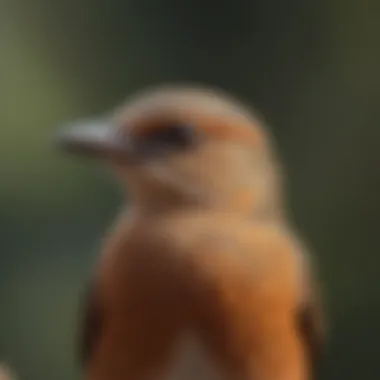
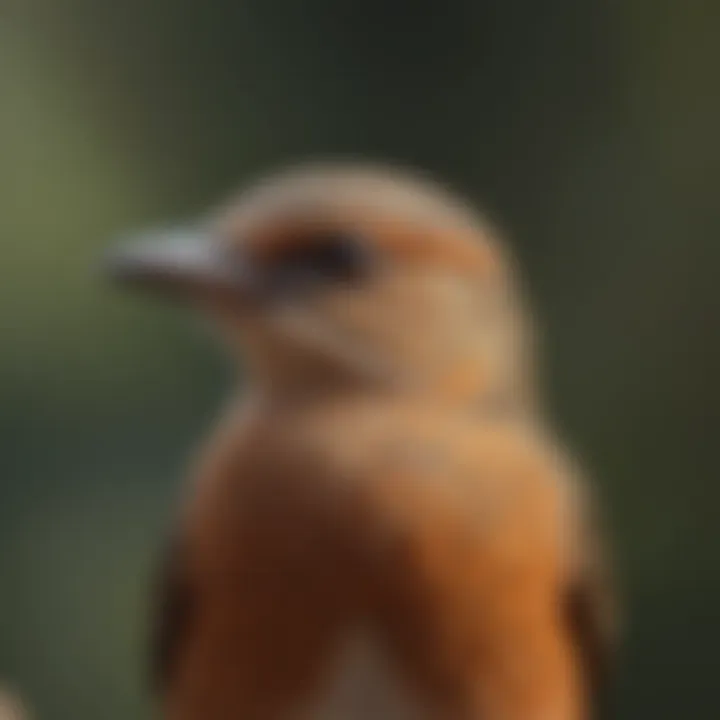
One crucial aspect of honing your bird song identification skills is recording your observations. This practice allows you to capture the sounds that intrigue you for later analysis. Several apps, like Merlin Bird ID or BirdNet, allow you to record songs easily. This feature is beneficial because it gives you a chance to focus solely on the bird's song instead of trying to memorize it on the spot.
A unique characteristic of recording your observations is it creates a personalized library of sounds. Over time, you can revisit these recordings, solidifying your memory of each bird's unique calls. Although the quality of your recordings can vary based on your device's microphone and background noise, the effort put into creating this library enhances your skills tremendously.
Analyzing Bird Songs
Once you have recordings, the next step is analyzing bird songs. This analysis can provide deeper insights into avian behavior and patterns. Utilizing software like Raven Lite enables you to visualize sound waves and explore frequency distributions. This can be eye-opening, revealing how closely related species might sound.
The key characteristic of analyzing bird songs lies in uncovering these fine details. It's a popular choice among researchers and enthusiasts alike because it deepens the understanding of not just who is singing but also why. However, it requires a keen ear and some practice, as complex sounds may take time to interpret. Analyzing bird songs also comes with its challenges; the variability can lead to misidentification if not approached with care. The effort, however, is well worth it, as it transforms simple listening into a comprehensive learning experience.
Remember, every song holds a clue. By developing your skills in both recording and analyzing, you enrich your journey in the world of birds.
Community Contributions and Crowdsourcing
In the realm of avian acoustics, community contributions and crowdsourcing emerge as powerful tools driving the field forward. Understanding how local birdwatchers, hobbyists, and even casual observers can plug into the documentation of bird songs sheds light on collective efforts that enhance our grasp of these remarkable creatures. When individuals unite their expertise and passion, a wealth of knowledge can be amassed, maturing into invaluable data that benefits countless stakeholders, from conservationists to researchers.
Through platforms like eBird and other dedicated forums, the raw data gathered from people around the globe provides insights into bird populations and migratory patterns that were once out of reach. The effectiveness of placing the power of documentation into the hands of ordinary citizens speaks volumes about how crowdsourced efforts can minimize gaps in scientific observation, often revealing patterns that high-tech solutions might overlook.
Citizens’ Role in Bird Song Documentation
Every person matters in the documentation of bird songs; amateurs often pick up on variations and nuances that trained ornithologists might miss. Bird enthusiasts, regardless of their experience level, can contribute to this evolving database. Here are key roles that citizens play in this process:
- Observation and Recording: Individuals can record songs and calls using basic smartphones or dedicated audio devices, creating primary datasets for researchers.
- Reporting: By inputting data into established platforms, people help paint a more detailed picture of bird populations, allowing for informed conservation strategies.
- Creating Awareness: Sharing findings on social media can spark interest and engage others in birdwatching, leading to a higher volume of records and improved understanding.
Active participation ensures that various voices are heard and countless experiences are documented. An array of contributions can only improve the richness and depth of bird conservation efforts.
Examples of Successful Crowdsourced Projects
Numerous projects around the world highlight the efficacy of crowdsourcing in bird song documentation. Here are examples illustrating the power of community-driven initiatives:
- Zooniverse: This platform brings together thousands of volunteers to analyze audio recordings. Projects like "Forget Me Not" invite individuals to listen and transcribe bird songs, making expert-level research accessible.
- Cornell Ornithology Lab’s eBird: A stellar example where bird lovers can share their sightings, contributing both song and other behavioral data. With thousands of users worldwide, the information gathered on migratory patterns and habits creates a massive dataset that fuels many conservation projects globally.
- Xeno-canto: This is an online collection specifically for sharing bird sounds from all over the world. It encourages people to upload their recordings, thereby enriching the database for bird enthusiasts seeking to learn or identify songs.
These examples showcase how collective efforts lead to meaningful data, offering crucial insights into bird behavior, vocalizations, and even ecological needs. Moreover, they exemplify the butterfly effect—where one small contribution can ripple outwards, influencing research and conservation strategies on a grand scale.
Bird Conservation Through Song Identification
Bird song identification can play a significant role in conservation efforts. Recognizing the various vocalizations of birds allows enthusiasts and researchers to monitor populations, assess their health, and address environmental changes that may affect them. In this section, we’ll dive into how understanding bird songs contributes to conservation initiatives and what it means for biodiversity as a whole.
Impact on Species Survival
One cannot underestimate the vital link between bird songs and species survival. The ability to identify specific bird songs enables conservationists to track the presence and abundance of different species in various habitats. This is important because many bird species are facing threats that endanger their survival, such as habitat destruction, climate change, and invasive species.
When bird watchers possess the skills to distinguish between the melodic phrases of a Eurasian skylark or the unique call of a golden-crowned kinglet, they can contribute valuable data to ongoing studies. For example, the decline of common species can often be detected through their song patterns. Unusual disturbances in song frequency or absence can signal potential problems in an ecosystem, prompting immediate conservation action.
"Bird songs are not just notes in the air; they are vital indicators of our environment's health."
In recent years, several studies have shown that monitoring bird songs contributes to successful conservation strategies. Species that resonate with particular habitats can often thrive where their songs are heard. Conversely, a decline in song presence might indicate degradation, inspiring subsequent measures to protect natural resources. Furthermore, when enthusiasts report their findings, they provide a rich dataset that aids researchers in understanding broad ecological trends.
Understanding Habitat Needs
Diving deeper into how bird songs relate to habitat understanding, we find that the vocalizations don't just indicate a population but also reflect habitat preferences. Many bird species have evolved their songs to communicate effectively within their specific surroundings. For instance, forest-dwelling birds might sing in ways that can travel through dense foliage, while open-country birds may use simpler tones that cut through vast spaces.
By analyzing the song patterns of various species, conservationists can derive insights into preferred habitats based on the sounds that flourish there. This functionality of bird songs helps in the planning of habitat restoration projects, ensuring that conservationists create environments that align with the needs of the birds.
Here are a few key points to consider regarding habitat needs and bird songs:
- Specificity: Different species are often associated with specific qualities of their habitats, such as vegetation type and structure.
- Change: As habitats shift, either naturally or due to human intervention, the songs that populate a region can also change, which serves as a cornerstone for researchers to evaluate habitat health.
- Mapping: Tools that integrate song identification with geographical data can lead to more focused conservation strategies, like establishing protected areas or identifying critical migration routes.
Through these insights, experts can better coordinate efforts in areas requiring restoration or protection. In a nutshell, understanding bird songs is not simply an enjoyable pastime; it is a crucial method to gather data that fuels effective conservation strategies and ensures a better chance for our feathered friends in their natural habitats.
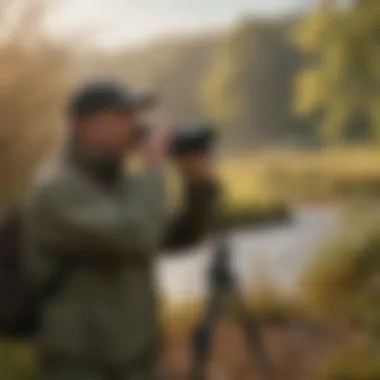
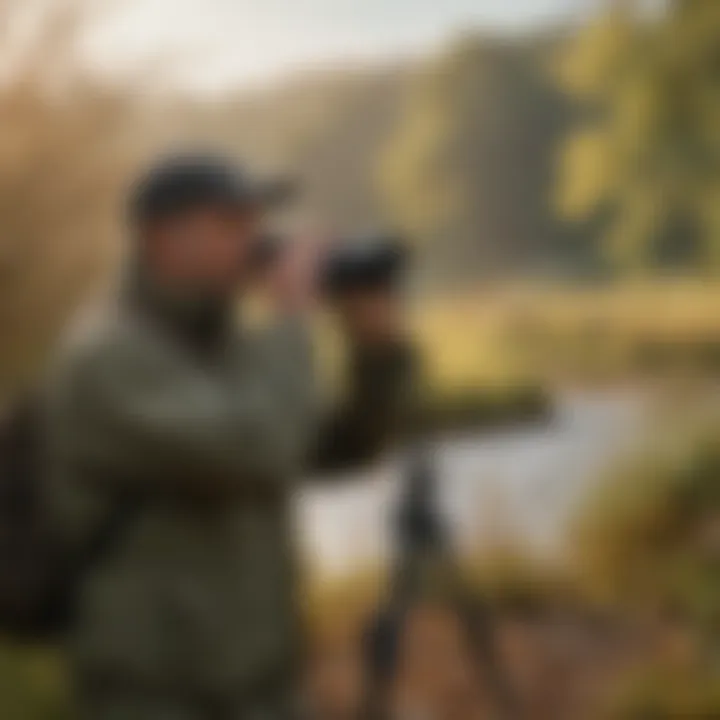
Challenges in Bird Song Identification
Identifying bird songs can be quite the adventure, but it certainly comes with its share of hurdles. This section tackles the challenges faced by enthusiasts, offering a look into the specific components that can make or break the process. Recognizing the nuances of these challenges helps budding birders navigate their learning journey more effectively while deepening their appreciation for the vocal world of birds.
Environmental Interference
Environmental factors play a massive role when it comes to bird song identification. One key challenge is background noise. Imagine you’re in a lush forest, the sounds of rustling leaves, water flowing, and even distant human activities clutter the air. All of this can easily drown out the delicate melodies birds produce, making it that much harder to pinpoint which feathered friend is singing. Other environmental conditions, such as wind, rain, or even echoes, tend to distort sound further. This is especially problematic in urban settings where the cacophony of city life can mask the subtle tunes of birds.
To tackle these challenges, bird watchers should consider timing. Early mornings or late afternoons are often the most favorable times for bird songs, as birds tend to be more active and vocal during these hours. Therefore, dropping into your local park at the right moment could vastly improve your chances of hearing unimpeded bird songs. Moreover, investing in good quality microphones can help in capturing the essence of bird vocalizations, providing a clearer soundscape despite the surrounding noise.
Tip: Pay attention to the seasonal changes in bird behavior. Some birds are more vocal during mating seasons, offering a natural soundtrack that’s easier to decipher against lesser background noise.
Variability in Bird Songs Among Species
When diving into the world of bird songs, it's essential to acknowledge that variability among species is a significant hurdle. Each bird species has its unique set of songs, calls, and even dialects based on geographic location. For example, the songs of the common sparrow may change from region to region. In some areas, their melodies may be a series of cheerful trills, while in others, they might sound more like a harsh cheep.
This variability can mislead even seasoned birdwatchers. An inexperienced ear might mistake one bird's song for another due to these subtle differences. Furthermore, many species exhibit a range of vocalizations used for multiple purposes, like alarms for predators or expressing discomfort. Learning to differentiate between these calls can be overwhelming, especially when encountering unfamiliar birds.
A practical approach to combat this challenge is to utilize resources such as bird song databases or mobile applications. By repeatedly listening to recorded songs, birders can train their ears to recognize patterns specific to different species. This can create a foundational understanding that makes identifying unfamiliar birds feel less like searching for a needle in a haystack. Practicing regularly in various locations is equally beneficial, as it helps to blend familiarity with new sounds.
In the end, recognizing the barriers posed by environmental noises and variability in bird songs is essential. By adopting informed strategies, bird enthusiasts can make their identification efforts less daunting and even enjoyable. With persistence and the right tools, anyone can decrypt these hidden melodies in nature's grand symphony.
Future Directions in Bird Song Research
Bird song research is on the brink of transformation thanks to rapid advancements in technology and changes in research methodologies. As people become more engaged in nature conservation, the understanding of bird songs not only improves, but it also opens the doorway to untapped opportunities for research. It's about harnessing the unending potential of technology while riding the wave of community involvement and contribution.
Emerging Technologies
Technology has stepped up its game in recent years, revolutionizing how we identify and study bird songs. With sophisticated software that analyzes audio recordings, researchers can now parse out nuances in vocalizations that were previously lost in the mix.
Key Technological Innovations:
- Machine Learning Algorithms: These are being employed to classify bird songs based on thousands of audio recordings. By training models to recognize patterns, scientists can achieve astonishing accuracy in identification.
- Mobile Applications: User-friendly apps like Merlin Bird ID and Song Sleuth enable both amateurs and seasoned bird watchers to record and identify songs in real-time.
- Remote Monitoring: Devices can gather data without human presence. This allows for ongoing study in vulnerable ecosystems without disturbing the birds themselves.
These innovations underscore a crucial pivot towards data-driven research. And they serve a dual purpose—advancing scientific knowledge while fostering further appreciation for our feathered friends.
Potential for Expanded Research
The future holds immense potential for broadening the scope of bird song research. As more individuals engage in the documentation of their local bird songs, a robust database emerges. This collective effort could lead to insightful discoveries about avian behavior, migration patterns, and even adaptations to changing climates.
Considerations:
- Collaboration Across Disciplines: There’s an exciting opportunity for interdisciplinary research involving bioacoustics, ecology, and even psychology to explore how birds communicate and how humans interpret their voices.
- Increased Accessibility of Resources: With more online platforms allowing users to contribute data, anyone with a smartphone can join the cause. This grassroots movement can fill gaps in current data, especially in understudied regions.
- Dynamic Research Opportunities: From sound recognition projects to in-depth studies on how urbanization affects bird vocalizations, researchers have a wealth of avenues to explore, leading towards deeper ecological understanding.
Effective engagement and collaboration among researchers, technologists, and community members can reshape the future of bird song research greatly.
As we look towards the horizon of bird song research, the integration of tech innovations with a collaborative mindset promises not just insights into our wildlife but also fosters a spirit of conservation that is essential for future generations.
Ending: The Path Forward
The journey we’ve embarked on in understanding bird songs through online platforms is both exciting and necessary. As we dive into the depths of avian vocalizations, it becomes increasingly clear how crucial this knowledge is, not just for bird lovers but for the environment as a whole. By decoding these intricate melodies, we open a window to the ecological tapestry where every note holds a story.
Embracing Technology and Community
We live in an era dominated by technology, and it’s without a doubt that this advanced toolkit plays a key role in bird song identification. With mobile applications such as Merlin Bird ID and Song Sleuth, enthusiasts can easily record and analyze the beautiful symphonies of nature around them. These platforms not only help in identifying species but also foster a community where knowledge is shared freely.
Moreover, online databases act as invaluable resources. They gather citizen observations into centralized hubs, offering richer data for researchers. Each user contributes to a broader understanding, making every chirp worth recording. As more people engage with these applications, they're not just identifying birds; they’re building bonds with their neighbors, forging a community that cares deeply for the natural world. It’s becoming a solid footing under the larger umbrella of bird conservation efforts.
Call to Action for Bird Enthusiasts
For aspiring bird parents, breeders, or anyone with a keen interest in avian life, the time is ripe for action. Step outside, listen intently, and take advantage of the tools at your disposal. Capture unique bird songs, share your findings, and immerse yourself in discussions on platforms like Reddit or even local Facebook groups.
The goal here is not merely personal enjoyment but active involvement in conservation and ecological understanding. As we push to preserve the delicate balance of our ecosystems, each contribution, no matter how small, potentially has enormous ramifications. Here are a few ways you can contribute:
- Document Local Bird Songs: Make audio recordings of the species you encounter and upload them to databases.
- Join Community Projects: Collaboration amplifies impact. Participate in local conservation projects that monitor bird populations.
- Educate Others: Share your insights with friends or at community centers.
Every action reverberates within the ecosystem of bird conservation. Moving forward, let's not just appreciate bird songs but also leverage our collective efforts to ensure that future generations can enjoy the same melodious encounters with the natural world.















